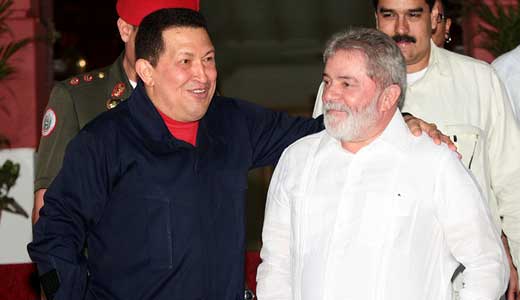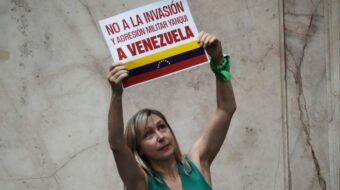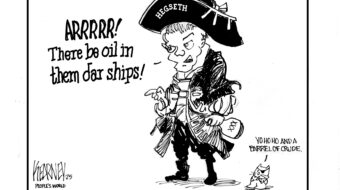
Arriving in Caracas Dec. 2 for a two-day inaugural meeting of the Community of Latin American and Caribbean Nations (CELAC), Cuban President Raul Castro told reporters that, “For the first time in history we will have an organization of Our America…It [may] be the greatest happening in 200 years of Latin American and Caribbean semi-independence.”
Cuban national hero Jose Marti once labeled all territory between Texas’s Rio Grande River and Tierra del Fuego as “Our America.”
Heads of states and their ministers were on hand to establish an organization of 33 nations to promote regional integration, the common good and survival in a crisis-filled world. CELAC takes up the unification cause that had languished since the failure in 1826 of liberator Simon Bolivar’s Congress of Panama.
Canada and the United States are the only Western Hemisphere nations not part of CELAC. CELAC proponents say participation of U.S. allies Colombia, Mexico, Peru and Chile testify to the group’s wide appeal.
Delegates were upbeat. Brazilian President Dilma Rousseff asserted, “Never before have we had such a great opportunity for this continent to have an important international role.” Colombia’s María Emma Mejía, secretary general of the Union of South American Nations (UNASUR), agreed: “Latin America is living through an unprecedented political, economic and cultural renaissance and presents today as an example for the world.”
Rousseff pointed out that economic growth in Latin America surpasses that in Europe and the United States. Indeed, Latin America, with 550 million people, has world’s largest petroleum reserves and 30 percent of its fresh water. It’s the world’s largest food-producing region.
Observers credit Venezuelan President Hugo Chavez and ex-President Luiz Inacio Lula Da Silva of Brazil as the main promoters of CELAC. An inaugural summit set for July 2011 had been postponed to December due to illness suffered by Chavez.
CELAC leaders approved a 39-point “Declaration of Caracas.” According to Article 28, CELAC is “the only mechanism of dialogue and reconciliation that 33 Latin American and Caribbean countries subscribe to and the highest expression of the will for unity within diversity.” Article 23 called for “respect for international law, peaceful solutions of controversies, prohibition against the use of force, self determination, sovereignty, territorial integrity, non interference in internal affairs and protection and promotion of all human rights and democracy.” CELAC will provide “instruments to guarantee the implantation of all this.”
The document pays homage to the present bicentennial year of independence from Spain, sustainable development, a “multi-polar and democratic world” and “all cultures, races and ethnic groups.” It denounces foreign military occupations. Article 13 lauds independent Haiti’s contribution to Latin American liberation in the early 19th century.
CELAC promulgated a “Caracas 2011 Action Plan.” Plans were laid for working groups and conferences to deal at regional and sub-regional levels with issues like the international financial crisis, new Latin American financial institutions and tools (including a Latin American and Caribbean system of preferential tariffs), environmental protection, economic development and sustainability. CELAC set up mechanisms for regional cooperation in telecommunications, commercial transportation, protection of migrants and dealing with hunger, poverty and illiteracy,
CELAC was years in the making, beginning with the Contadora group in the 1980’s and formation in 1986 of the integrationist Rio Group, which included 23 countries before giving way to CELAC. The Summit on Latin American and Caribbean Integration and Development (CALC), formed in 2008, served as CELAC’s immediate predecessor,
Preparations for the CELAC founding summit began in earnest at a 2010 CALC meeting in Mexico. Over the following year, 15 ministerial level meetings took place in various Latin American locations. Individual meetings were dedicated to one of the issues the “Caracas 2012 Action Plan” would be dealing with.
CELAC will reconvene in Chile in 2012, in Cuba in 2013, and in Costa Rica in 2014. CELAC leaders regard the Cuba meeting as making amends for Cuba’s U.S. instigated exclusion from the Organization of American States (OAS). The United States launched the OAS in 1948 to pursue its anticommunist agenda in Latin America. Chilean journalist Ernesto Carmona spoke for many in predicting, “With time, CELAC will end up nullifying the anachronistic OEA.”
In fact, Raúl Zibechi’s message seemed to resonate at the CELAC assembly. The Uruguayan analyst had noted earlier, “The creation of CELAC is part of a global and continental shift, characterized by the decline of U.S. hegemony and the rise of a group of regional blocs that form part of the new global balance.”
Photo: Chavez and Lula, who began the push for the current phase of Latin American integration. chavezcandanga // CC 2.0










